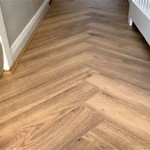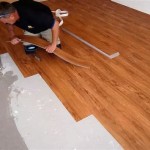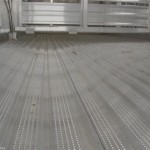Rooftop Deck Flooring Options: A Comprehensive Guide
Rooftop decks offer a valuable extension of living space, providing opportunities for relaxation, entertainment, and enjoying panoramic views. Selecting the appropriate flooring is crucial for ensuring the longevity, safety, and aesthetic appeal of these elevated outdoor spaces. Numerous factors influence the ideal flooring choice, including durability, maintenance requirements, weather resistance, weight limitations, and desired aesthetic. This article explores a variety of rooftop deck flooring options, highlighting their advantages, disadvantages, and suitability for different applications.
Weight is a primary consideration when selecting rooftop deck flooring. Building structures have weight-bearing limitations, and exceeding these limits can compromise structural integrity. Lightweight materials are generally preferred, particularly for existing buildings where structural modifications may be impractical or costly. In addition to weight, climate plays a significant role. Rooftop decks are exposed to the elements, including direct sunlight, rain, snow, and fluctuating temperatures. The chosen flooring must withstand these extremes without warping, cracking, fading, or becoming slippery. Furthermore, maintenance requirements impact the long-term cost and effort associated with the deck. Low-maintenance options are often favored for their convenience and reduced upkeep.
Wood Decking: A Classic Choice with Modern Alternatives
Wood decking remains a popular choice for rooftop decks due to its natural beauty and warm aesthetic. Traditional wood options like redwood, cedar, and pressure-treated lumber offer a classic look but require regular maintenance to prevent rot, decay, and insect infestation. This maintenance typically involves annual cleaning, staining, and sealing. The lifespan of traditional wood decking can vary significantly depending on the type of wood, the quality of installation, and the level of maintenance provided.
To address the maintenance concerns associated with traditional wood, composite decking has emerged as a viable alternative. Composite decking is manufactured from a blend of wood fibers and recycled plastic, offering enhanced durability and resistance to moisture, insects, and fading. While more expensive upfront, composite decking often proves cost-effective in the long run due to its reduced maintenance requirements. It typically requires only occasional cleaning with soap and water to maintain its appearance.
Another option in the realm of wood decking is thermally modified wood. This wood undergoes a heat treatment process that alters its cellular structure, making it more resistant to rot, decay, and insect damage. Thermally modified wood retains the natural beauty of wood while significantly reducing the need for chemical treatments and maintenance. It is a sustainable and environmentally friendly option for rooftop decks.
When selecting wood decking or its alternatives, consider the span between joists. Wider spans require thicker decking boards to prevent sagging and ensure structural stability. Proper installation is also crucial for the longevity and performance of any wood decking material. This includes adequate ventilation beneath the deck to prevent moisture buildup and proper spacing between boards to allow for expansion and contraction due to temperature changes.
Tile and Stone: Durable and Elegant Options
Tile and stone offer exceptional durability and a sophisticated aesthetic for rooftop decks. These materials are naturally resistant to water, fire, and extreme temperatures, making them well-suited for outdoor environments. Porcelain tile, in particular, is a popular choice due to its low water absorption rate and resistance to staining. Stone options like slate, granite, and travertine provide a natural and luxurious look, but may require sealing to protect against staining and moisture penetration.
The weight of tile and stone is a significant consideration for rooftop decks. These materials are considerably heavier than wood or composite decking, and it is essential to ensure that the building structure can support the added weight. Lightweight concrete pavers or tiles can be used to reduce the overall load. These pavers are often made from a blend of lightweight aggregates and cement, offering a similar look and feel to traditional concrete pavers but with a reduced weight.
Installation of tile and stone on a rooftop deck requires careful attention to detail. A properly installed waterproofing membrane is essential to prevent water from penetrating the underlying structure. A drainage system should also be incorporated to ensure that water is effectively channeled away from the deck surface. The use of adjustable pedestals or a mortar bed allows for the creation of a level surface and facilitates drainage. Grout lines should be sealed to prevent water infiltration and staining.
Consider the slip resistance of the tile or stone surface. Textured surfaces provide better traction, especially in wet conditions. Dark-colored tiles can absorb more heat in direct sunlight, making them uncomfortable to walk on barefoot. Lighter colors reflect more sunlight and stay cooler to the touch. Regular cleaning with a mild detergent is typically all that is required to maintain the appearance of tile and stone flooring.
Synthetic Turf and Rubber Flooring: Comfortable and Low-Maintenance Alternatives
Synthetic turf and rubber flooring offer unique advantages for rooftop decks, providing a comfortable and low-maintenance surface. Synthetic turf replicates the look and feel of natural grass without the need for watering, mowing, or fertilizing. It is a durable and weather-resistant option that can create a comfortable and inviting outdoor space. Rubber flooring, often made from recycled tires, provides a resilient and shock-absorbing surface that is ideal for play areas or exercise spaces.
Synthetic turf is available in a variety of pile heights, densities, and colors, allowing for customization to suit different aesthetic preferences. It is typically installed over a drainage layer to prevent water accumulation. Regular brushing is recommended to maintain the upright appearance of the turf fibers. Occasional rinsing with water can help remove dirt and debris. Some types of synthetic turf may require infill, such as sand or crumb rubber, to provide stability and support.
Rubber flooring is available in various forms, including interlocking tiles, rolled mats, and poured-in-place surfaces. Interlocking tiles are easy to install and can be configured to fit any space. Rolled mats provide a seamless surface and can be cut to size. Poured-in-place rubber flooring is a more permanent option that offers a smooth and uniform surface. Rubber flooring is typically slip-resistant and easy to clean with soap and water.
Both synthetic turf and rubber flooring are lightweight options that can be installed on most rooftop decks without exceeding weight limitations. They are also relatively low-maintenance, requiring only occasional cleaning to maintain their appearance. These materials can provide a comfortable and safe surface for children and pets, making them a popular choice for family-friendly rooftop decks. However, synthetic turf can retain heat in direct sunlight, and some types of rubber flooring may have a distinct odor, especially when new.
Other Considerations for Rooftop Deck Flooring
Beyond the primary flooring materials discussed above, several other factors influence the selection process. The overall budget plays a significant role in determining the available options. Some flooring materials are more expensive upfront but offer long-term cost savings due to reduced maintenance. Others are more affordable initially but require more frequent upkeep or replacement.
Accessibility is another important consideration. If the rooftop deck is intended for use by individuals with mobility limitations, it is essential to choose a flooring material that is smooth, level, and slip-resistant. Ramps or elevators may be necessary to provide access to the deck. The installation process itself can also affect accessibility. Consider the ease of transporting materials to the rooftop and the potential disruption to building occupants during construction.
Local building codes and regulations may impose restrictions on the type of flooring that can be used on rooftop decks. It is crucial to consult with local authorities and obtain the necessary permits before starting any construction project. Fire resistance is a particularly important consideration, especially in densely populated areas. Some flooring materials are more fire-resistant than others, and it is essential to choose a material that meets the required safety standards.
Finally, consider the overall design aesthetic of the building and the surrounding environment. The flooring should complement the architectural style of the building and create a cohesive and visually appealing outdoor space. Consider the color, texture, and pattern of the flooring and how it will interact with other elements of the deck, such as railings, furniture, and landscaping. By carefully considering all of these factors, it is possible to select the perfect flooring for creating a beautiful, durable, and functional rooftop deck.

What Are The Top Residential Rooftop Deck Flooring Option

Rooftop Deck Flooring Guide

Rooftop Deck Construction Considerations Design Ideas

9 Rooftop Deck Flooring Ideas Tiles Tile

Rooftop Deck Flooring Guide

Rooftop Terrace Decks All Decked Out

Rooftop Decking Floor Features Ideas Materials

Roof Deck Flooring Materials A Comprehensive Guide

Rooftop Deck Construction Considerations Design Ideas

How To Build A Rooftop Deck On Sloped Roof Arrak
Related Posts








